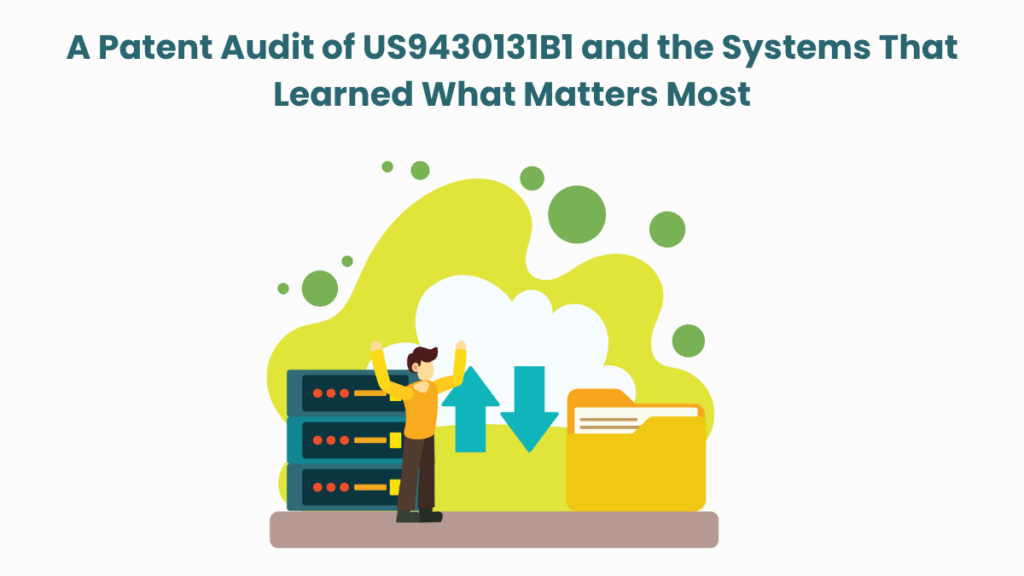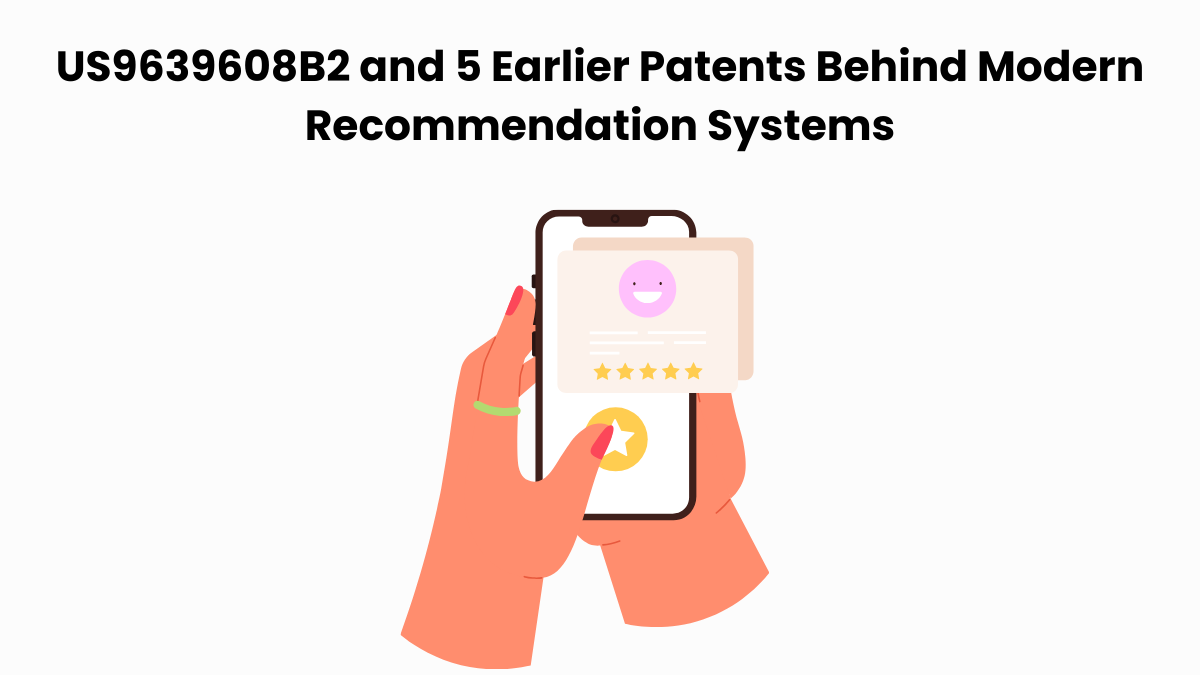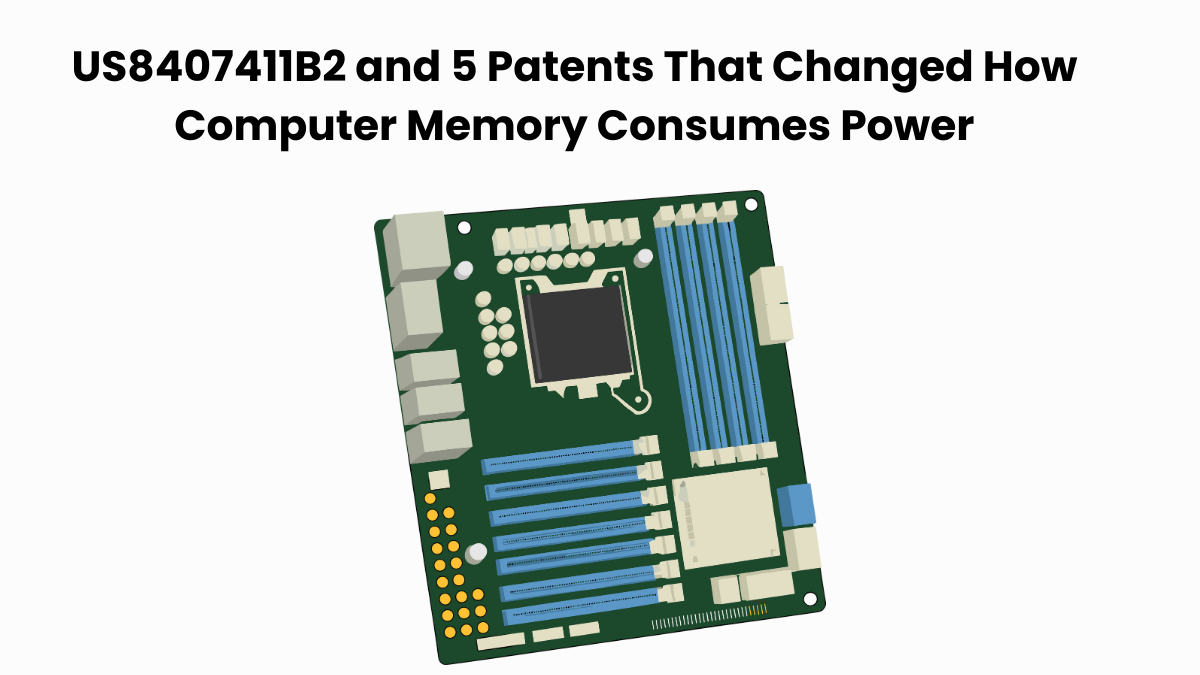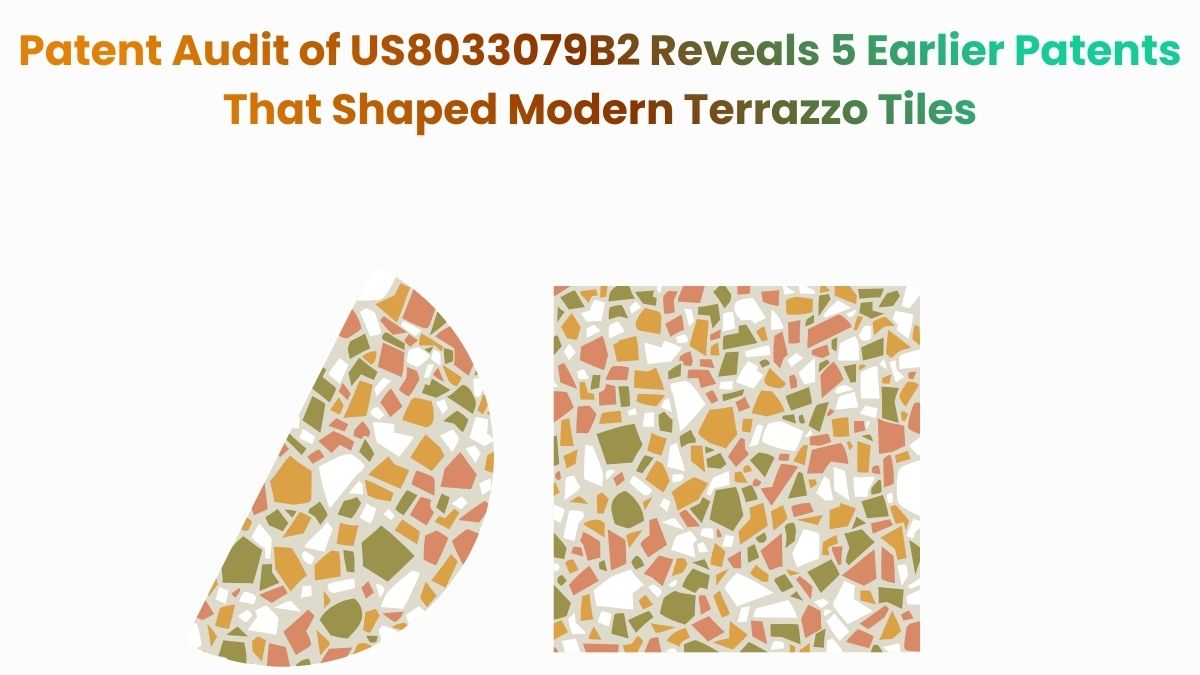Have you ever noticed how the internet seems to remember what you care about, even after you’ve left a website? You search for a pair of shoes once, and suddenly every brand online seems to know.
That quiet connection between different websites is what makes digital experiences feel personal. It connects what you do, what you click, and what you buy across different platforms.
Patent US9430131B1 builds on this idea. It’s a system that learns how to organize and rank data across platforms so that every click starts to make sense. Today, this patent sits at the center of several ongoing lawsuits.
To understand what makes it stand out, we used the Global Patent Search (GPS) tool. It helps paint a clear picture of how similar ideas evolved and which other patents share its approach to organizing digital information.
The Core Idea Behind US9430131B1
Every digital interaction leaves a trace, in the form of a click, message, file, or a search. Over time, those traces multiply.
What once made the web feel personal can quickly turn into noise.
Patent US9430131B1, titled “System, Methods, and User Interface for Organizing Unstructured Data Objects”, was designed to bring order to that noise. It teaches systems how to recognize what truly matters to each user.
The system looks at different data sources like folders, contacts, or emails. Then it assigns each item an importance score based on things like keywords, context, and personal preferences. The higher the score, the more visible that item becomes.
In simple terms, it’s a system that helps computers think like humans, filtering for relevance, not just recency.
The Main Building Blocks of US9430131B1
At its heart, this invention is about teaching computers to organize information the way we do, by instinctively knowing what matters most. The patent breaks that idea into a few core functions that work together like parts of a thought process.
1. Assigning importance to data: Every file, email, or message gets a kind of “priority score.” The system studies keywords, context, and patterns to figure out which items deserve more attention.
2. Giving users control over what matters: It’s not just the machine deciding. Users can set their own rules. That is, users can highlight certain words, names, or topics, so the system learns from their preferences.
3. Showing what’s important first: Once the system understands relevance, it changes how information appears. Important items stand out visually, through their position, size, or color so users can spot them instantly.
4. Keeping everything organized automatically: Instead of leaving users to drag and drop or manually sort, the system rearranges content in real time. It groups, labels, and ranks items based on what it’s learned about importance.
Together, these building blocks make digital spaces feel less overwhelming. Instead of drowning in endless data, users see what actually matters. This small but powerful shift turns information overload into intelligent order.
A direction that overlaps with US11736499B2, where the system also learns what normal execution looks like before deciding whether a request is behaving differently than it should.
Other Inventions That Reflect US9430131B1’s Vision
We wanted to know if others had tried to solve the same puzzle i.e. how to make unstructured data feel organized and meaningful. So we turned to Global Patent Search tool to find out.
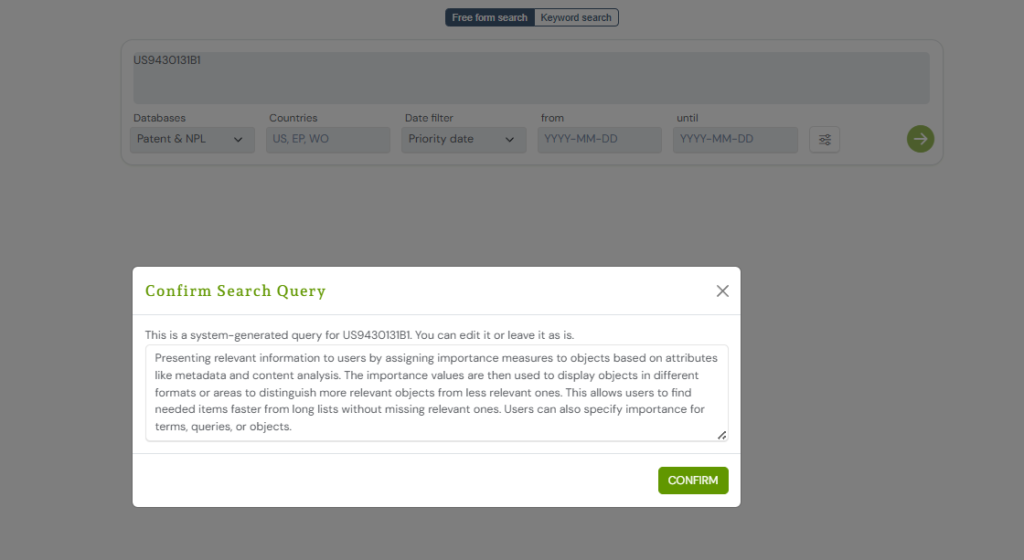
We entered the patent number and in a matter of seconds, GPS brought up patents from different parts of the world. Each one approached the challenge in its own way, but the goal was strikingly similar.
To help you see the bigger picture, here are some of the closest matches and what connects them to US9430131B1.

1. WO2010022094A1 – The Mood-Based Ranker
Filed in 2009, this patent explores how systems can understand a user’s mood and use it to personalize what appears on screen. It goes beyond data and clicks, focusing on emotional context.
If the user seems calm, the system highlights relaxing content. If the user is focused, it brings forward items that match that energy. The goal is simple, make digital experiences feel natural, not random.
The logic closely mirrors US9430131B1. Both aim to bring order to information chaos. The difference lies in their lens. US9430131B1 looks at data importance, while WO2010022094A1 looks at emotional relevance.
Why WO2010022094A1 Matters
WO2010022094A1 marked an early shift toward human-centered personalization. It showed that relevance isn’t just about numbers or keywords, but also about how people feel in the moment. That thinking paved the way for intelligent systems that adapt not only to what users do, but also to how they respond.
A useful comparison is US9118712B2, which proposes secure content sanitization via isolated VMs to strip out risky code before rendering pages, a strategy that underlines evolving browser security paradigms.
2. US20120088561A1 – The Familiarity Scorer
US20120088561A1, filed on October 8, 2010, explores how users can directly shape the ranking of digital content. It creates an interactive system where people rate or score items based on how familiar or relevant they feel.
Imagine opening a screen filled with topics or products. You tap on what feels most useful, and the system learns from those choices. Over time, it builds a personalized order, showing you what matters most first.
That’s where it connects with US9430131B1. Both are built around the same principle: let people guide what’s important. While US9430131B1 quietly calculates importance behind the scenes, US20120088561A1 invites the user to take part in it.
Why US20120088561A1 Matters
The patent brought human judgment into the process of digital organization. It proved that algorithms could learn not just from data, but from real feedback. That idea has shaped everything from modern recommendation engines to content ranking systems that adapt with every click.
3. US20140025690A1 – The Feedback Sorter
The patent US20140025690A1, filed on September 25, 2013, brings people into the loop. Instead of algorithms deciding what comes first, it lets users have a say.
You rate what you like: maybe a document, a photo, or a video, and the system quietly learns from that feedback. The more people enjoy something, the higher it climbs. Over time, what you see on screen starts reflecting what the crowd values most.
That’s what connects it to US9430131B1. Both believe relevance should come from human input. One learns through data and context, the other through direct opinion. In the end, both are trying to make digital spaces feel a little more personal.
Why US20140025690A1 Matters
This patent showed that ranking doesn’t have to be cold or mechanical. It can be shaped by the people who use it. That idea now drives everything from product reviews to recommendation feeds, where what we like, rate, or share decides what rises to the top.
4. US20190361757A1 – The Trust Builder
US20190361757A1, filed on May 25, 2018, shifts the focus from personal relevance to credibility. It describes a system that ranks digital content based on how trustworthy it is.
The patent tech looks at where an article, document, or link appears, how often it’s used, and who cites it. Each piece of content gets a trust score, which changes depending on its activity across different sources. The higher the score, the more visible that content becomes.
It’s a smart way of cleaning up noisy online spaces. Instead of pushing everything forward, the system learns which sources deserve attention and which don’t.
That approach aligns closely with US9430131B1, though the goal is slightly different. While US9430131B1 personalizes data based on what’s important to a single user, US20190361757A1 works at a broader level. It decides what’s reliable for everyone.
Why US20190361757A1 Matters
The patent marked an important step toward a more responsible internet. It introduced the idea that ranking shouldn’t just be about relevance, it should also be about trust.
You can see that influence today in search engines, social media algorithms, and AI systems that weigh both accuracy and authority before showing results.
5. US20140108426A1 – The Crowd Ranker
US20140108426A1, filed on October 4, 2013, focuses on how people can work together to decide what’s most important. It describes an interactive system where multiple users rate or score things like songs, books, or answers, and watch those ratings shape the results in real time.
Think of it like a group vote that instantly updates the screen. Every new rating changes where an item sits. The higher the score, the more prominent it appears.
The system also uses visual tools like sliders and scales so users can easily give feedback. Behind the scenes, it’s all about translating human opinion into structured data that the system can organize and display.
That’s where it connects beautifully with US9430131B1. Both turn human input into digital order. The difference is in the scale. US9430131B1 helps one person make sense of their own information, while US20140108426A1 captures how a whole community defines relevance together.
Why US20140108426A1 Matters
The patent made ranking more democratic. It showed that meaningful organization can come from collaboration, not just code. That thinking laid the groundwork for the recommendation systems and rating models we see everywhere today, from streaming platforms to review-based marketplaces.
Recommended Read: US9432452B2 and 5 Similar Patents That Make Streaming Faster for Everyone
Comparison Summary: How Each Patent Compares with US9430131B1
| Patent | Filed / Published | Core Idea | Ranking / Organization Method | User Input or Control | Technical Overlap with US9430131B1 | Key Difference |
| US9430131B1 | 2012 / 2016 | System for organizing unstructured data based on importance | Assigns “importance values” using metadata, keywords, and context | Allows users to define preferences and relevance rules | ||
| WO2010022094A1 | 2009 (WO) | Mood-based personalization for media content | Adjusts ranking based on detected user emotions | Indirect user influence through mood signals | Moderate – both focus on relevance-driven display | Uses emotion instead of data-driven logic |
| US20120088561A1 | 2010 (US) | Interactive scoring of items by familiarity | Users assign scores or preferences manually | Strong – direct human scoring shapes display order | Relies entirely on user input, not automated analysis | |
| US20140025690A1 | 2013 (US) | Ranking content through user feedback and ratings | Aggregates public opinions into importance scores | Strong – collective feedback defines ranking | Focuses on crowd-based importance, not individual context | |
| US20190361757A1 | 2018 (US) | Trust-based ranking for online sources | Generates trust scores from citation and usage data | Minimal – system-driven scoring | Moderate – both depend on scoring to order data | Emphasizes source credibility over personal relevance |
| US20140108426A1 | 2013 (US) | Group-based rating and dynamic visual ranking | Combines multiple user ratings to position items in real time | Strong – visual sliders for group scoring | Strong conceptual overlap in data ranking logic | Designed for collaborative rather than personal use |
Did you know? Litigation campaigns around web personalization patents show how broad digital claims attract challenges. US9454748B2 case highlights similar risks tied to data-driven customization and survey systems.
Finding Similar Innovations with GPS
Every digital system that ranks or organizes information belongs to a much larger network of related ideas. Over the years, engineers and researchers have explored countless ways to make sense of unstructured data.
The Global Patent Search (GPS) tool helps uncover that network. It brings together patents and research papers that analyze, rank, and prioritize data so that users see what truly matters first.
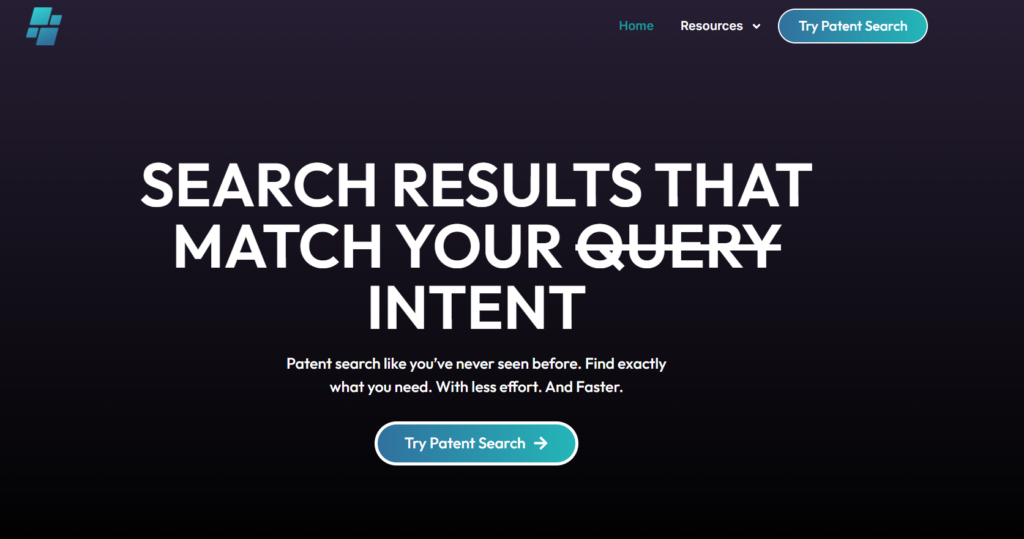
Here’s how to use it effectively:
1. Start with your core idea: Type the patent number, like US9430131B1, or describe your concept in plain English, for example, a system that organizes digital files and messages based on importance. GPS uses this as a starting point to find conceptually related inventions across patents and non-patent literature.
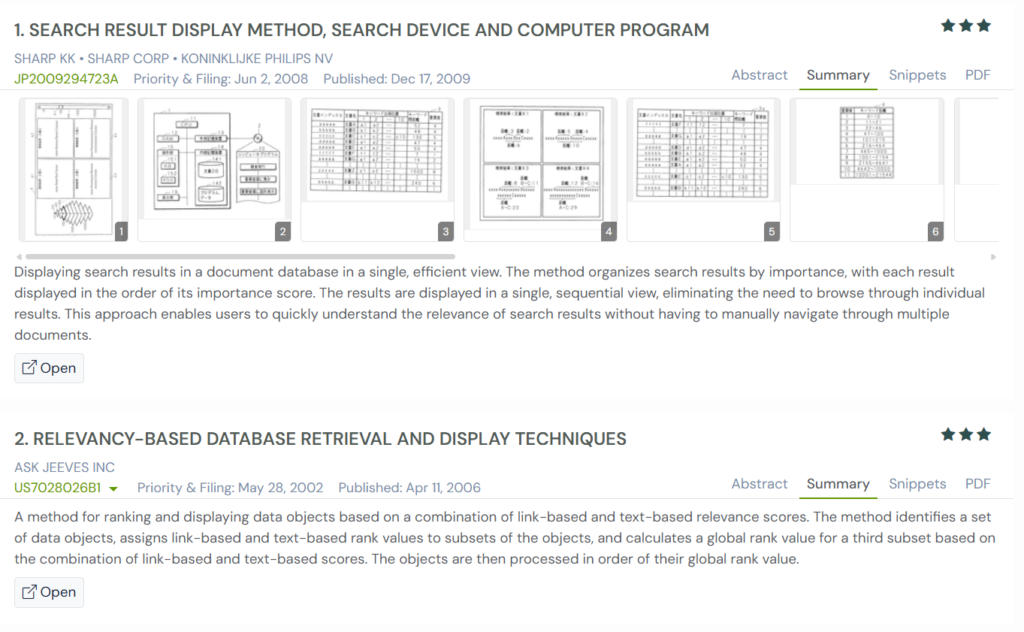
2. Review the key summaries: GPS highlights short, relevant summaries from each result, often pulled from the claims or technical description. These summaries reveal how each invention handles data ranking, user input, or display logic. Skim through them to understand the approach without opening the full document.
3. Dive deeper when something connects
If a summary feels close to your idea, explore the detailed snippets next. They often show how the system scores data, uses metadata, or blends automation with user preferences. When the overlap feels meaningful, open the full document to study the implementation or logic in context.
4. Explore across domains
Relevance ranking doesn’t belong to one industry. You’ll find it in search engines, email filters, e-commerce recommendations, and even AI-driven content curation. GPS helps trace how this same principle, identifying what’s most important, evolves across these different applications.
GPS goes beyond keyword matching. It connects inventions that think alike, not just those that sound alike. For US9430131B1, that means uncovering how relevance-ranking systems began, how they’ve diversified, and how they continue to shape the intelligent interfaces we use every day.
Try the GPS tool today to see how your idea fits into the evolving story of digital organization and intelligent sorting.
Frequently Asked Questions
1. Why is organizing unstructured data such a big challenge today?
Most of the world’s information doesn’t live in neat folders or databases. It exists in emails, messages, images, and random files scattered across devices and platforms. The problem is that we have too much, and most of it is unstructured.That makes it hard for systems to understand what’s important and what’s not.
2. How do personalization systems decide what to show first?
Every time you click, scroll, or save something, systems take note. They quietly learn what you care about and what you tend to skip. Over time, they start predicting what you’ll find useful. That’w what your favorite app seems to know exactly what you want to see next. Personalization is built on small, consistent signals that slowly build a picture of your preferences.
3. What’s the difference between personalization and recommendation?
Personalization focuses on you. It looks at your choices, patterns, and history to decide what fits best. Recommendations come from others. They’re based on what people like you enjoyed or interacted with.
4. How do tools like Global Patent Search (GPS) help track innovation in this field?
When you look at one invention, it tells a story. But when you connect it with hundreds of related ideas, you see a pattern. That’s what GPS does. It finds links between patents and research papers that share the same purpose or mechanism. Instead of just matching keywords, it shows how ideas evolve and influence one another. For people studying innovation, GPS turns a single discovery into a full map of progress. ence.
Disclaimer: The information provided in this article is for informational purposes only and should not be considered legal advice. The related patent references mentioned are preliminary results from the Global Patent Search tool and do not guarantee legal significance. For a comprehensive related patent analysis, we recommend conducting a detailed search using GPS or consulting a patent attorney.

